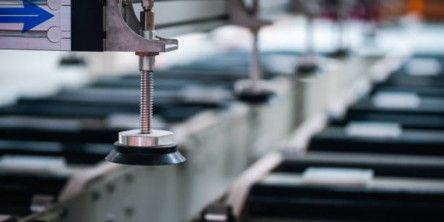Explaining the Oxygen Challenge for High Resistivity P-type Silicon Wafers
The main challenge for higher resistivity silicon material is to control the behavior of interstitial oxygen involved during the growth of Si crystals. The concentration of interstitial oxygen is generally higher than 5E17at/cc and it can be converted beneficially into oxygen precipitates below the area to eliminate metallic contaminants away from active devices.
In P-type silicon wafers, thermal donors used to increase the resistivity of the Si wafer until the concentration of the thermal donor exceeds the P-type carrier concentration. At this point, the wafer will appear to be n-type. Calculations here are generally based on experimental data illustrating the influence of thermal donors. It is shown on a 50 ohm-cm P-type wafer resistivity for different interstitial oxygen levels.
Chemical and crystallographic defects are a reality of solar-grade silicon wafers and industrial production processes. As we all know Silicon is a commonly used semiconductor, which means that it has a high resistance to the electricity. However, the resistance is not as high as an insulator such as rubber. Pure silicon used to have electrical properties, which are manipulated by other elements and called “dopants”. These dopants determine the type of silicon, positive or negative, and also change the resistivity of the silicon.
Dopants basically decide whether the final Si wafer will be a P-type wafer or an N-type wafer. Furthermore, the amount of dopant determines the final resistivity of the wafer. P-type silicon wafer are manufactured by using only one type of dopant, called as Boron, which you can also see in the periodic table as B. The volume of Boron present in the silicon wafer determines the resistivity. It is believed that the less Boron present in Si wafer means higher the resistivity. The relative abundance of P-type silicon wafers tends to keep the cost less than N-type wafers.
How to consider the cost of Si Wafers?
Each Si wafer must be particle-free. If there is a single particle on a polished wafer, it will adversely affect the functionality of the wafer. Due to this, calibration usually involves a traceable particles standard in order to determine the quality and cost of the fabric. There are different grades used to classify wafers. If wafers are larger than one hundred and fifty millimeters, then it usually is divided into test and mechanical test varieties.
However, Mechanical test varieties are used predominantly for equipment designed for testing and have an influence on structural and dimensional characteristics. A monitor wafer, also known as process test wafers is used in semiconductor fabrication and process monitoring. Particle silicon wafers are mainly designed to be used for measuring the actual particles. You must understand the difference between n and p-type silicon wafers to navigate the market and make price comparisons easier.
The Si wafer manufacturing process is highly complicated and tedious. It includes a number of sequential processes that are required to create an electronic circuit. As the demand for semiconductors will increase continuously in the future, manufacturing companies to speed up the manufacturing process to handle the demand.
If you are involved in the Si wafer manufacturing industry, then it is important for you to understand the complete manufacturing process. Just like with any products, quality and price vary, and the same applies on silicon wafers. It is highly advisable to learn about p-type silicon wafers in order to determine its resistivity and right usage. You can begin your research online, and find out numerous silicon wafer manufacturers in your area. Contact multiple manufacturers to get the best quote available for your work and take decision accordingly.
Similar Articles
CNC Machining has emerged as a vital technique in the current production process, as it provides an efficient and accurate means of manufacturing items with complex geometries. This technology is applied across aerospace, automobile, and medical devices manufacturing fields, and various other industries.
Find out what to look for in a reliable CNC machining manufacturer, from quality assurance and advanced technology to customer service, for efficient project success.
Save on pipe relining costs with smart planning. Learn how to reduce expenses through targeted repairs, material choices, off-peak scheduling, and competitive bids.
When it comes to metalworking, the quality of your equipment can make a significant difference in the efficiency and accuracy of your projects. Among the essential tools in any metalworking shop is the sheet metal brake, which plays a crucial role in bending and shaping metal sheets
Discover the latest design trends and innovations in metal table legs, enhancing style and functionality for modern interiors.
In the dynamic nature of the industrial sector, high-efficiency gate valves play a crucial role in the flow control system. Leading valve suppliers and globe valve suppliers are always engaged in the development of this technology to enhance the efficiency of the equipment.
When it comes to constructing a metal building, whether it's for industrial, commercial, or residential use, choosing the right metal building company is crucial. Metal buildings offer durability, flexibility, and efficiency, but only if they are designed and constructed correctly.
Discover how ERP systems streamline procurement in manufacturing, enhancing efficiency, reducing costs, and improving supplier management.
In today's fast-paced manufacturing landscape, the use of high-quality bonding solutions, such as industrial adhesives, has become increasingly crucial to ensure product quality, efficiency and competitiveness.









